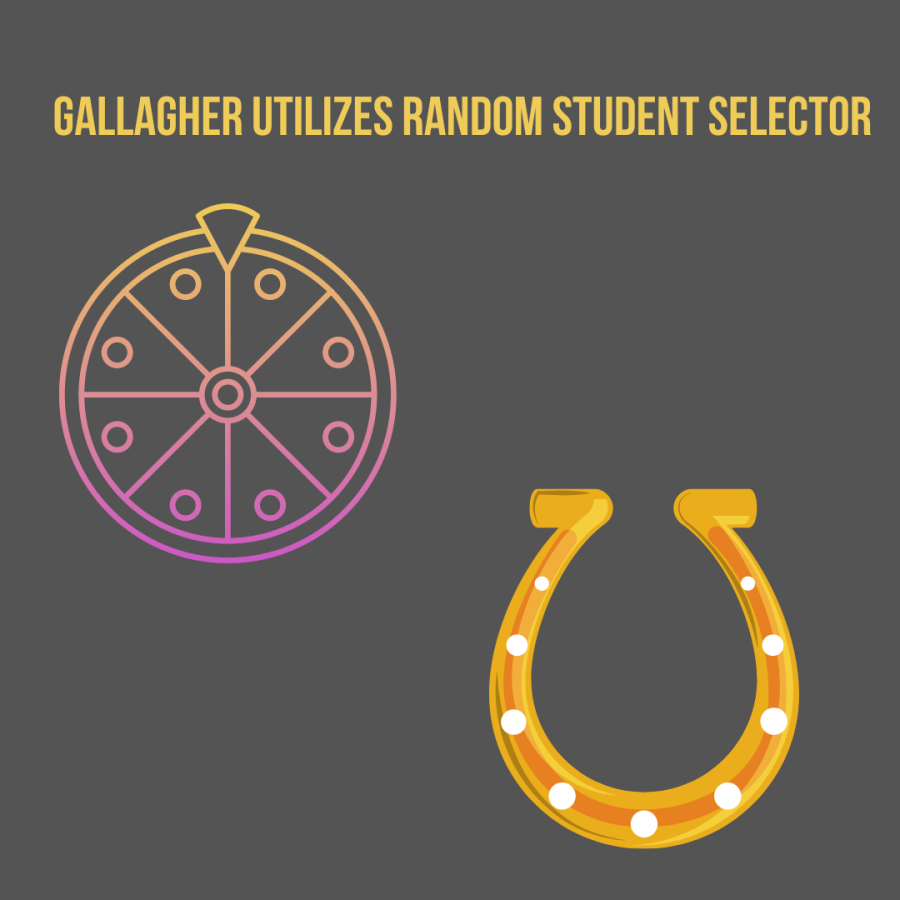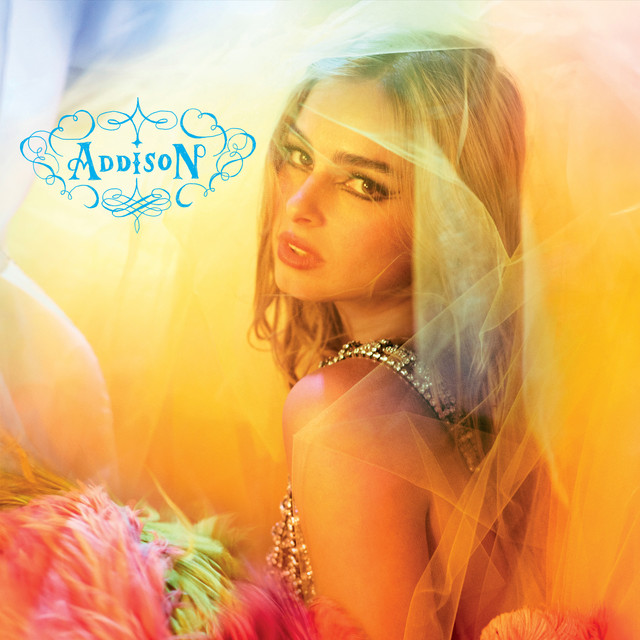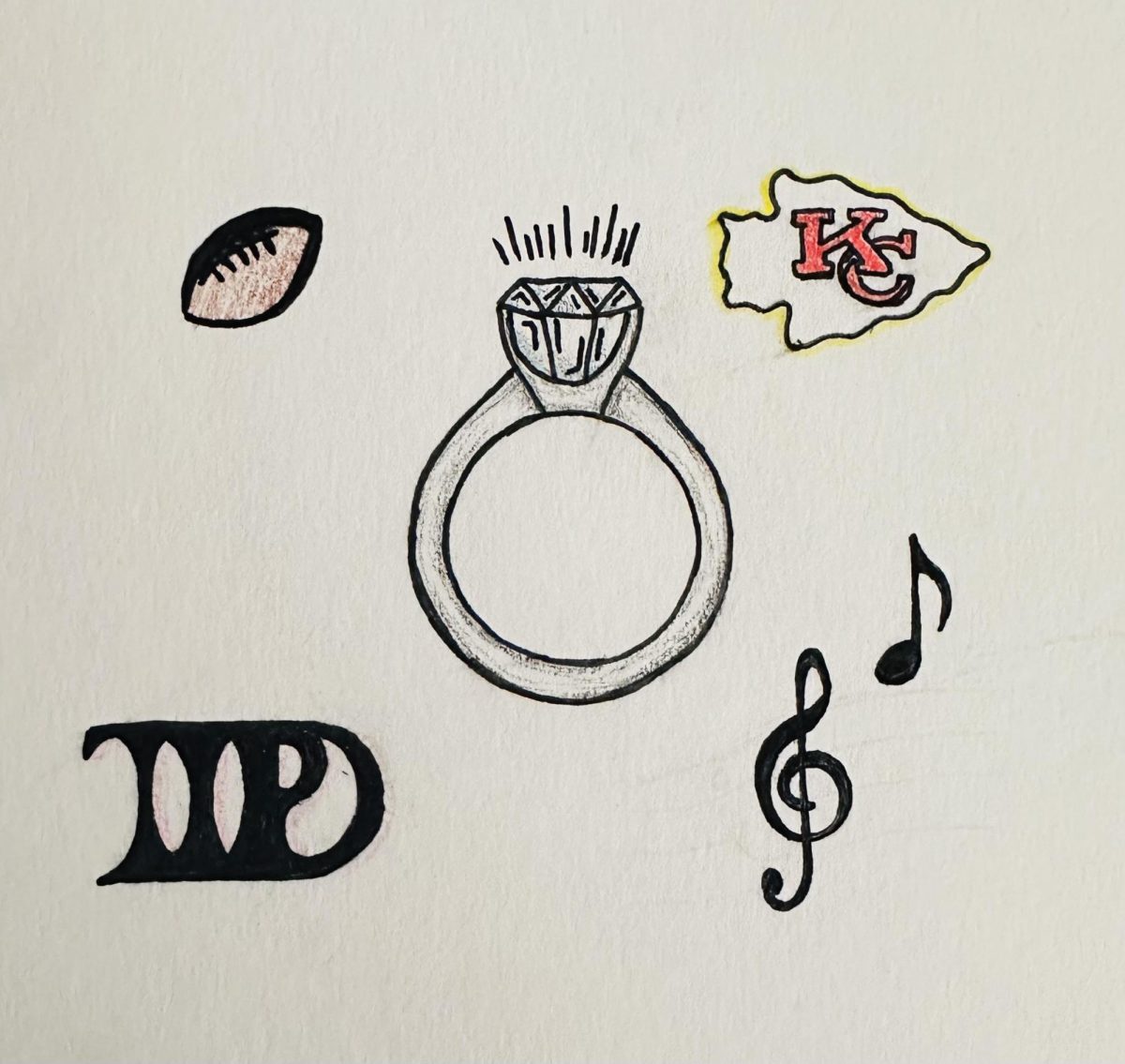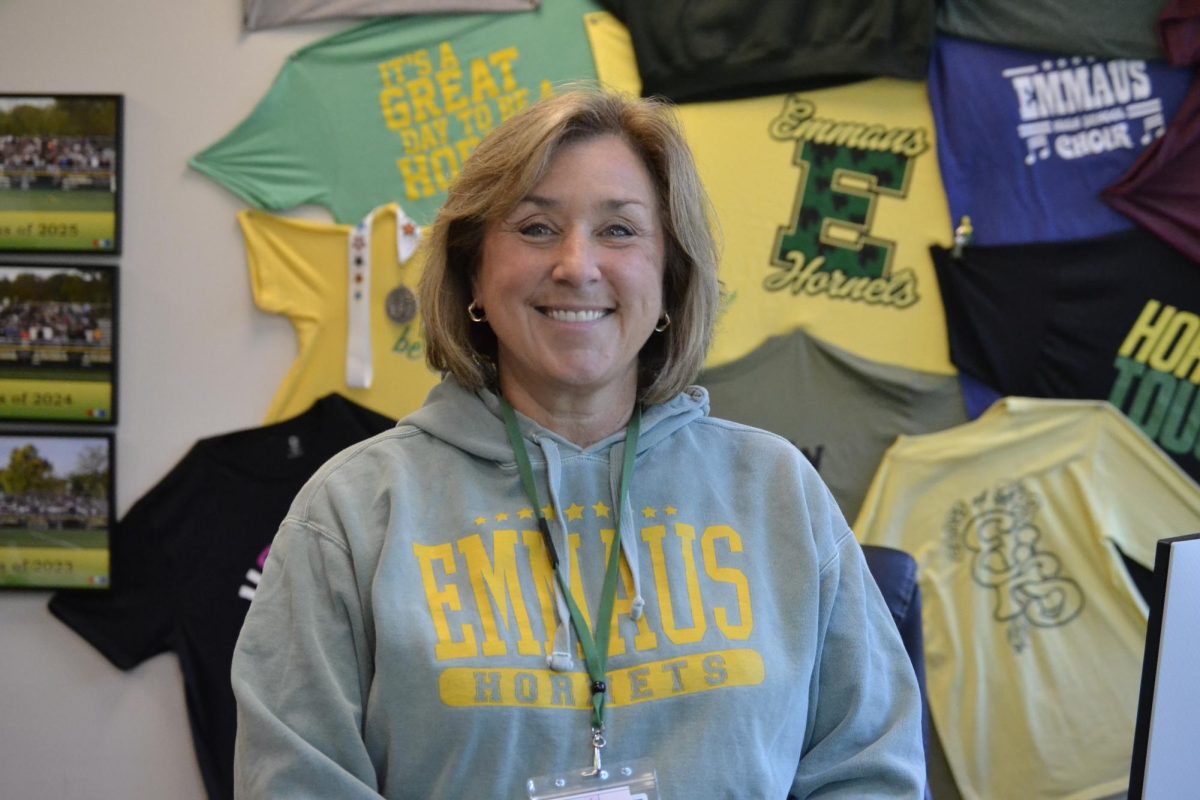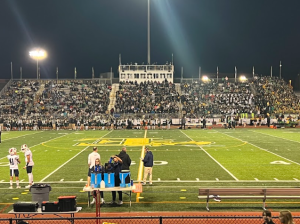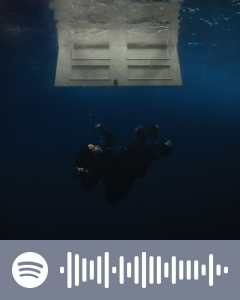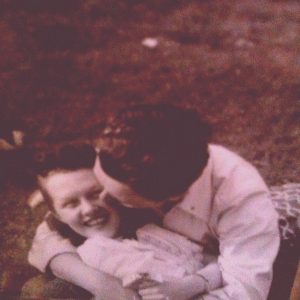Gallagher utilizes random student selector
Mar 5, 2023
This previously ran in our February 2023 issue.
Social Studies teacher John Gallagher always keeps his students on their toes by using his teaching best friend, the Random Student Selector.
Going on 30 years of teaching in the East Penn School District, Gallagher has fully mastered how to take control of a classroom and draw the attention of his students to him instead of their devices.
Gallagher takes on the teaching technique, “Sage on the Stage.”
According to Top Hat, a glossary of education-based terms, “Sage on the stage is a teaching method where a professor imparts knowledge by lecturing to their class.” The students are expected to take notes on what their teacher is telling them, memorize it, and use it for assessments and projects.
Gallagher believes in telling his students a story when he teaches, making history fun and interesting as he lectures.
“Tell them a story ‘cus that is what history is,” Gallagher said. “It’s a story.”
Even though Gallagher finds his students to be focused and interested in the history he is teaching them, his classroom periodically goes silent when it is time to answer questions or voice opinions.
“I have some classes where none of the shoulder muscles in the students work,” Gallagher said.
This is where the Random Student Selector, or the RSS, comes in.
The Random Student Selector is a feature on the teacher version of PowerSchool that allows teachers to scramble their rosters, and the system will select one lucky — or unlucky — student.
After discovering the RSS at a teachers’ inservice day, Gallagher thought it would be interesting to try it out in his classroom.
Gallagher uses the RSS when asking questions that require small amounts, if any, of background information, or questions where he has already provided his students with the information to fully understand them. They tend to be point-of-view, opinion, review, or generally subjective questions in which students can answer with a variety of responses where there is no definitive “correct answer”.
If he is asking his class a point-of-view question and plans on using the RSS to select who shares their answer, he will phrase the question as “what do you think of this…?”
When selecting students for knowledge-based questions, Gallagher will choose a topic that he taught in a previous class, using that part of the class as a review session; if the questions pertain to a section of reading, he gives them time in class to read.
“Typically [it is]more rare if I [ask factual questions]. I make sure to say ‘if you don’t know, just say so’,” Gallagher said.
Gallagher does not want his students to feel pressured to come up with an answer on the spot or panic when they’re asked a question they don’t know the answer to. He is open about being honest when you don’t know an answer, as he is conscious of his students being nervous when having to speak in front of a class. For this reason, the RSS can be a major source of anxiety for some students.
“The anxiety part of it is always a concern for me,” Gallagher said. “I don’t use it to make the students anxious. I use it to help them deal with it.”
Being an introvert himself, Gallagher is a strong believer in facing your anxiety and apprehension towards these situations head-on. He wants his students to see and appreciate every side of the situation.
“Your calm self has to learn to love your anxious self,” Gallagher said.
Using the RSS keeps Galllagher’s students more engaged during the discussion due to the chance of the selector striking again. This makes the class feel more productive and connected.
“[It] keeps the students more involved, which makes them more a part of the class,” Gallagher said.
Gallagher knows that every one of his students handles anxiety differently.
“There are students, I think, who are more anxious than others and that could be harrowing for them,” Gallagher said.
If the RSS selects one of his students who he knows will be distressed by speaking in front of the class, he gives them the option to speak or not speak. He tries to have a quick chat with that student to see if they feel confident with the topic and would like to share their answer.
He calls on students to answer questions in the order they’re selected by the RSS, but sometimes he calls on students earlier than their selection if he believes they need a broader selection of answers to choose from. He realizes that the lower a student is on the list, the more potential answers tend to dwindle, and even if the student knows the answer, their answer could have already been shared. This could cause unnecessary stress for the student when put in that situation. Gallagher does not use the Random Student Selector to hurt his students by making them anxious — he uses it to help them.
“The more we expose ourselves to anxiety, the less it affects us,” Gallagher said. “If I can help you as a student to be less anxious to be called on, then that is something that helps you, and if it helps you, then it helps me.”
He is aware that his students most likely do not see the beneficial aspects of the RSS and that causes a negative outlook on the selector from the students.
“No, I don’t think they [like it] at all,” Gallagher said.
There aren’t just benefits for the students of the Random Student Selector, but also some benefits for teachers who use it.
“[It] takes the heat off of the teacher to pick who to call on,” Gallagher said.
Even with the beneficial parts of the RSS, the selector does have flaws and needs some work; however, Gallagher still uses it because he believes the pros outweigh the cons.
“There are benefits to it for sure. What works for me is what works for me,” Gallagher said. “You do you, I’ll do me.”
Gallagher likes to do anything that will help his students advance themselves into greatness. This is why he believes in using the RSS in his classroom. He wants his students to be their best selves and embrace their nervousness.
“Being anxious is cool; we see it as a bad thing, but if you are nervous about something, it is important to you,” Gallagher said.
He just wants to see his students thrive in situations that make them uncomfortable, creating comfort around discomfort. Gallagher doesn’t want to see them hide from things that cause them anxiety. He uses the RSS to introduce his students to small elements of surprise, to help them fully accept their nervous sides.
“Being nervous is part of the game. You gotta do what you got to do,” Gallagher said. “You never decrease that anxiety, but you get used to it.”


